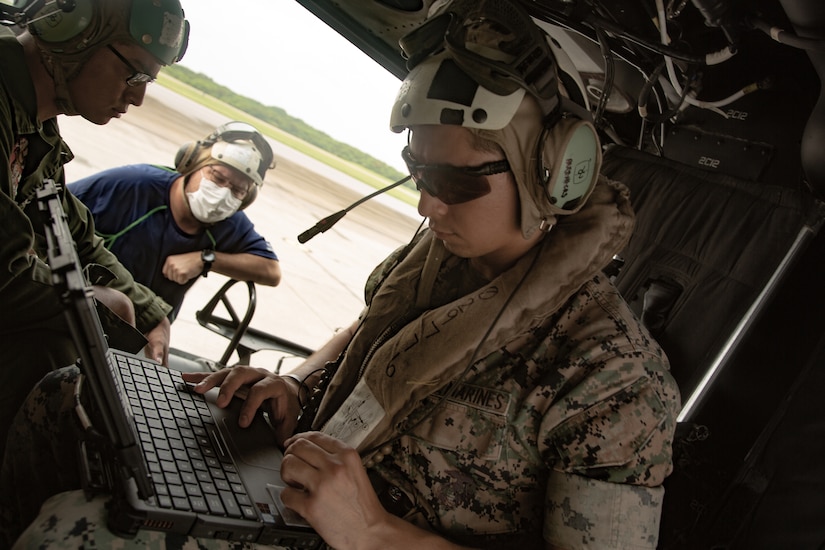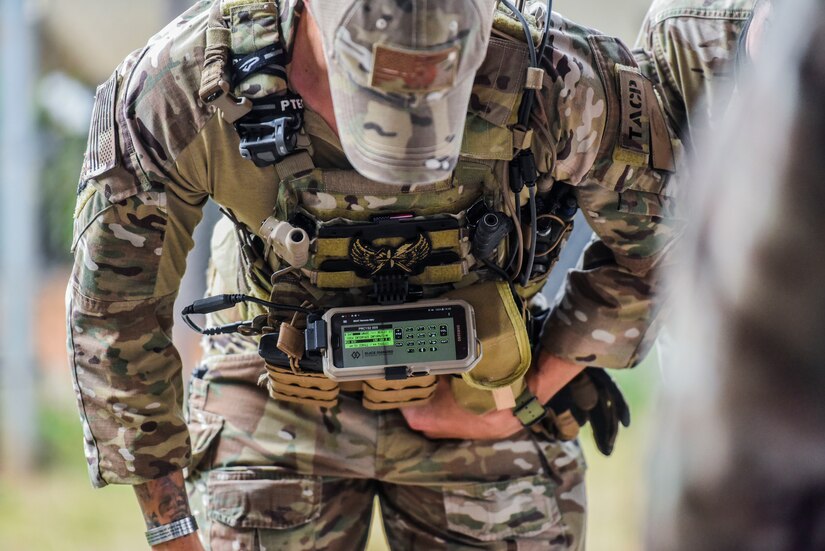BY DAVID VERGUN
 Data will be the fuel and the engine for everything the Defense Department has to do to bring intelligence and operations together, DOD's chief information officer told CIOs and technology leaders from across the department in a virtual global town hall meeting.
Data will be the fuel and the engine for everything the Defense Department has to do to bring intelligence and operations together, DOD's chief information officer told CIOs and technology leaders from across the department in a virtual global town hall meeting.
Dana Deasy said during the Aug. 12 event that quality data that is secure will also help to enable the development of artificial intelligence.
With AI, humans and machines are going to collaborate effectively and efficiently in an ethical manner, Deasy said, lauding the progress being made by the Joint Artificial Intelligence Center's work over the last 18 months.
The DOD COVID-19 Task Force, along with IT organizations across the department, have helped to protect DOD personnel, ensured continued execution of missions and supported the whole of government approach in combating the pandemic, the CIO said. The combatant commanders, leaders from across the services and the secretary of defense all have recognized that effort, he noted.
"It was there. It worked," he said, speaking of the tools that service members and DOD civilian employees have used to work remotely. "Yes, we had our moments where we had to scramble and get things fixed, but if you kind of take the long view of this thing, it was a truly remarkable result by all of you, so a huge 'thank you.'"
U.S. Cyber Command, the National Security Agency, the Defense Information Systems Agency, the Joint Staff, the military services and National Guard Bureau, as well as the DOD CIO office, worked together to get the necessary equipment into the hands of the users, enabling hundreds of thousands of people to work remotely, Deasy said.
Navy Rear Adm. William Chase, senior military advisor for DOD Cyber Policy, noted that adversaries such as Russia and China attack the information space daily through cyber intrusions; intellectual property theft — including weapon systems from the defense industrial base — and, attempts to deny DOD's use of command and control, networks and communications. As a result, he said, joint interoperability and all-domain command and control is a top priority for DOD.
An example, Chase said, is joint all-domain situational awareness, which involves integrating AI and secure cyber data enabled by machine learning as a tool for the combatant commanders to use in such things as target recognition and decision aids for use in long-range, precision fires.
Greg Garcia, the Army's deputy CIO, said it's important to have a workforce that is customer focused, communication strong, adept in technology management and structured to meet future demands.
Skills such as application software, data, information management, enterprise architecture, systems analysis and data analytics will increasingly help the department better prepare to improve mission outcomes in the digital future, he said.
A.G. Hatcher, deputy Air Force CIO, noted that it's critical that the joint force gain the needed 5G network access across different operating environments. Although innovation is taking place, it needs to move even faster, he said, not only to get to such goals as 5G, but to get to the post-5G network that inevitably will follow.
A 5G network would be particularly useful for telemedicine into remote areas such as Iraq or Afghanistan, he said, and work is being done on that at Joint Base San Antonio in Texas.
The next focus of 5G work will be on extending the range of the signals, particularly in the vast area of U.S. Pacific Command, Hatcher said, and work on that will occur soon at Joint Base Pearl Harbor-Hickam, Hawaii.
Aaron Weis, the Navy's CIO, said the challenge for his department is modernizing aging infrastructure and IT systems. The culture needs to change as well, he said.
"Today we have a culture that's driven by security through compliance," he said. "We need to get to a state where security is driven as a constant state of readiness."
Navy Vice Adm. Nancy Norton, the DISA director, said her agency is working to get new collaboration tools that support cloud computing. The Defense Enterprise Office Solutions Program will lead that effort. These cloud collaboration tools will be made available first to the combatant commands in support of the warfighters, and it will eventually expand out across the department, she said. DISA also is working on ways to reduce bandwidth, improve cyber security and improve performance, Norton said.



No comments:
Post a Comment